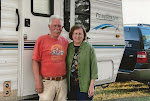Hope is a small town full of writers, poets, painters, musicians and other artists making this town an active arts community. Wal-Mart, Costco, Target or any other big box stores do not exist in this town. Hope is also the home of the ‘World Class Chainsaw Carving Competition’. Every few years they have this competition and when you drive around town you will see chainsaw carvings on the street corners.



Hope is also the birthplace of Rambo. In the fall of 1981, Hollywood rolled in and raised the American flag over the town of Hope for the filming of the movie ‘First Blood’. Because of the quiet small-town look and the majestic mountains and canyons, Hope and the Fraser Canyon have a long history of Hollywood productions.
There is a lot of hiking in this area and an interesting place to explore is the Coquihalla Canyon Provincial Park – home to the historic Othello-Quintette Tunnels. The abandoned railway tunnels and railway grade through Coquihalla Canyon gorge was converted into a hiking trail. These tunnels were designed by engineer Andrew McCulloch and built from 1911 to 1916 to complete the Kettle Valley Railway. Mr. McCulloch was a big fan of Shakespeare, so he named his stations, tunnels, and grades after characters in Shakespeare’s stories and plays. Such as Portia Station, Lear Station and of course the Othello Tunnels.



Another beautiful place to visit is the Minter Gardens in the town of Chilliwack; about 20 miles west of Hope. Centuries ago, a section of the mountain near Mt. Cheam tumbled down to the floor of the Fraser river Valley, creating a landscape of exceptional topography. On a family outing in 1977, Brian & Faye Minter discovered this picturesque site and a dream was born. Minter Gardens was officially opened on Mother’s Day 1980. The Garden is laid out on 32 acres and has 11 ‘themed’ gardens.



If you ever visit the Hope and Fraser Canyon area, I strongly recommend hiking the historic Othello-Quintette Tunnels, and exploring Minter Gardens in Chilliwack.
July 15 thru 16, 2009 - CARIBOO-CHILCOTIN GOLD RUSH TRAILThe next two days were overnight stays in Cache Creek and Quesnel. These towns are along the Cariboo Chilcotin gold rush trail. Along this route you will pass towns that are named 100 Mile House and 150 Mile House. These towns were named for mileposts for distances from the town of Lillooet which is the beginning (mile 0) of the gold rush trail. At the 108 mile post we stopped at a rest stop that was once a ranch. Today it is a Heritage Site with a museum and other buildings from the gold rush days. In Quesnel you will see the “Largest Gold Pan in the World” at the entrance of the city.


July 17 thru 19, 2009 - PRINCE RUPERTWe did an overnighter at Burns Lake before we reached Prince Rupert. While relaxing in our trailer we had a thunderstorm roll in producing a beautiful rainbow. Enroute to Prince Rupert, we stopped in Houston; Houston, British Columbia that is. Here we took a picture of the “World's Largest Fly Rod”.


Prince Rupert is a small harbor town at the edge of the wilderness and a gateway to Alaska’s inside passage. There is a lot of sport fishing, whale watching and wildlife viewing in this area. With all the totem poles around town there is also a lot of First Nation’s history here. The town has a small historical shopping section called Cow Bay. It got this name because in 1908 a Swiss man unloaded a herd of cows for his farm, from a barge that docked at this bay. While here we visited Cow Bay, a nearby Sunken Garden, and the Museum of Northern British Columbia.

South of town we found a wonderful hiking trail called the Butze Rapids Interpretive trail. It’s a 3 mile loop trail with a view point overlooking the Butze Rapids in Fern Passage. The trail takes you through old-growth forests, coastal wetlands, and forest bogs. The Butze Rapids are a tidal phenomenon that occurs twice daily when the high tide comes in forcing a high volume of water through this narrow passage causing the rapids to change direction. This is a very scenic trail that is peaceful and very relaxing. A ‘must see’!



We spent two days in Prince Rupert before finally reaching our destination of ALASKA! It is here that we enter the Alaska Marine Highway System by boarding a ferry and explore Alaska’s Inside Passage. We will board a ferry for a 6 hour ride to Ketchikan where we will spend three nights. Then we take another ferry for a 20 hour ride to Juneau for a four night stay. On this ferry we rented a 2 berth room. The third and final ferry will be another 6 hour ride to Skagway where we will spend 3 nights. Stay tune for Volume 4 to read about that adventure.






